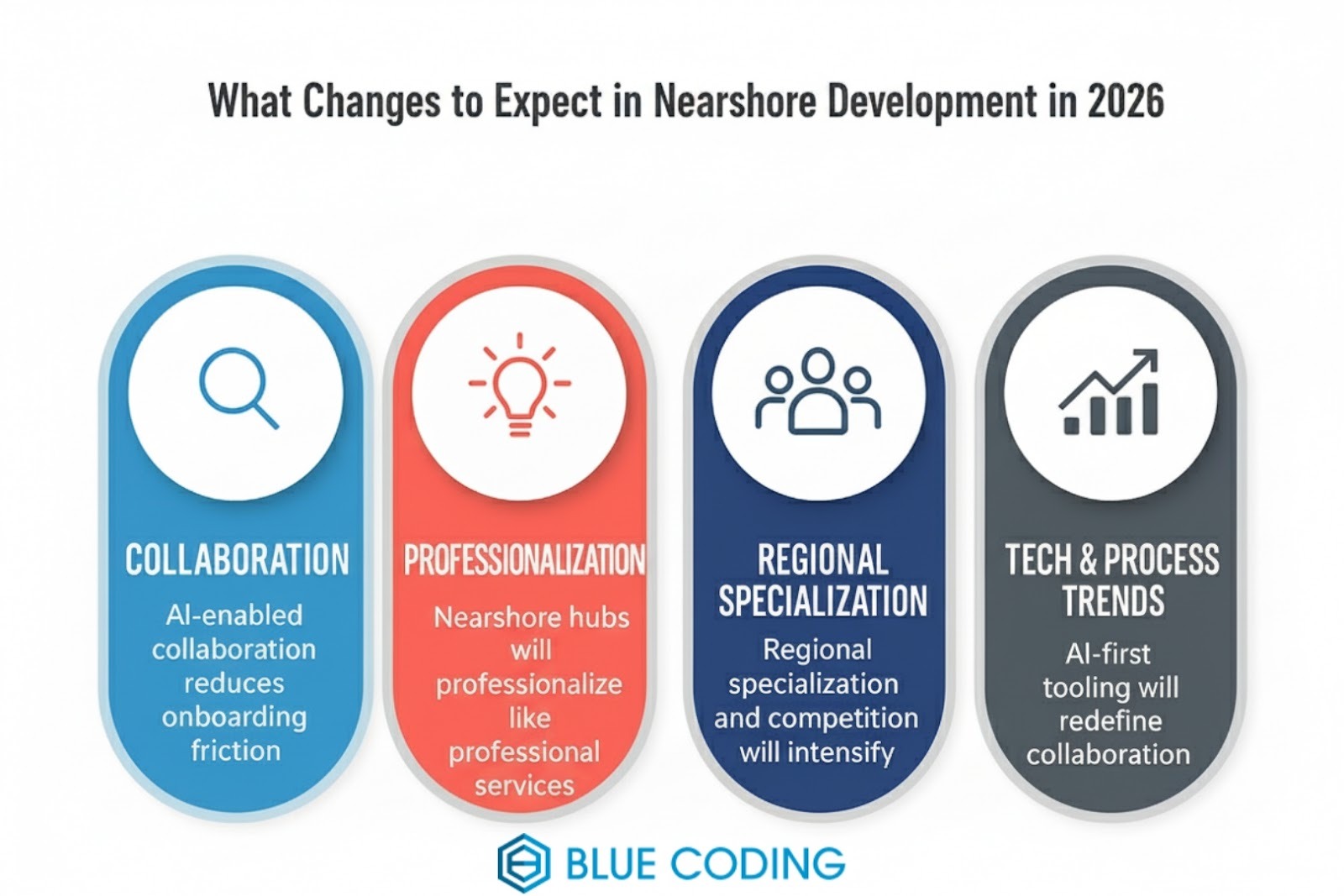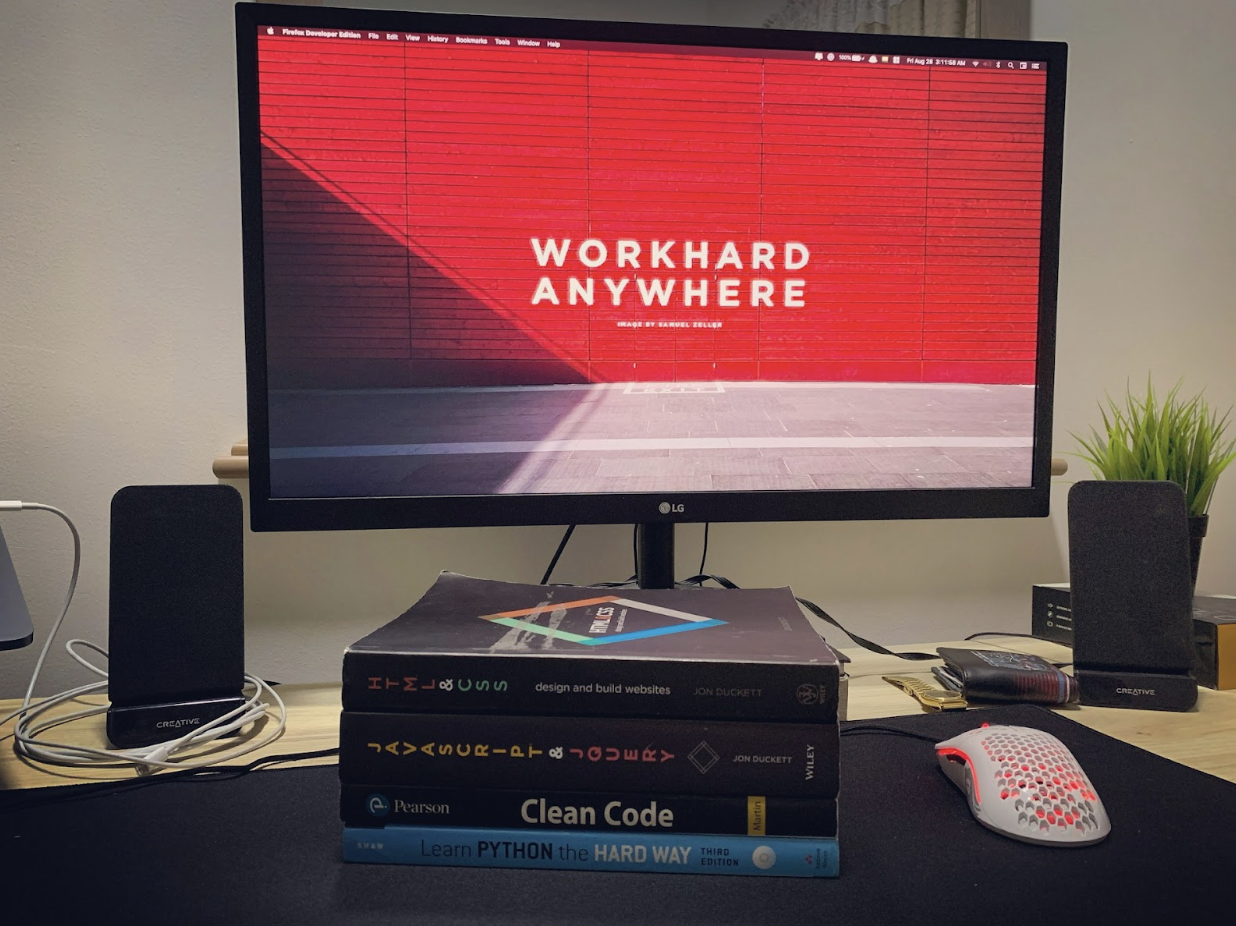 News
News
Nearshoring has been quietly moving from a contingency plan to a deliberate strategic choice for companies that want the efficiency of distributed teams without the friction of classic offshore models. By 2026, nearshore relationships will feel less like “outsourcing” and more like an extension of product and engineering teams, driven by AI-enabled workflows, tighter legal frameworks, and a maturity in how vendors and clients build trust across borders. Below, we pull together what’s already changing in the market and what that implies for product teams, hiring leaders, and CTOs who are planning for the next 18 months. Our aim is practical: explain what will be different, why it matters, and what to look for when you decide to nearshore.
What’s Changing and Why it Matters
AI-enabled Collaboration Reduces Onboarding Friction.
By 2026, generative AI assistants and augmented documentation (auto-generated design notes, test scaffolds, code summaries) will make it faster to bring remote engineers up to speed. That means speed-to-contribution from a nearshore developer will shorten, teams will ship features with smaller ramp windows, and less hand-holding. This shift isn’t theoretical: analysts are already predicting mass operationalization of AI across engineering workflows.
Nearshore Hubs Will Professionalize Like Professional Services.
Top nearshore providers are investing in legal/compliance, FinOps, and consultancy-level product management. Expect firms that started as talent suppliers to add advisory services (product discovery, security posture reviews, regulatory compliance support) so clients experience a single accountable partner. Market commentary and provider guides already show this move toward consultative delivery.
Regional Specialization and Competition will Intensify.
Latin America, Central & Eastern Europe (CEE), and selected pockets in Africa will keep scaling their tech ecosystems. Latin America will remain compelling for North American teams (time-zone alignment, language overlap, cultural affinity), while CEE will keep attracting Western European clients. Providers are doubling down on local technical education and employer branding to compete for senior engineers. The Financial Times and industry lists make the regional growth picture clear.
What Teams Will Actually Look Like in 2026 Nearshore Development
Nearshore engagements of 2026 won’t be “a few remote heads and a Slack channel.” Expect three common patterns:
↣ Embedded product pods: a small cross-functional unit (PM, 2–4 engineers, QA, designer) that works alongside an in-house product team and follows the same sprint cadence, shared KPIs, and retrospectives.
↣ Outcome-based squads: vendors take responsibility for a defined outcome (e.g., “reduce onboarding time by 30%,” “launch payments integration”), priced by milestones or business impact rather than pure hours.
↣ Talent-as-a-service with rapid rotation: companies maintain a small core nearshore bench with fast scale-up options when projects spike, supported by standardized hiring, shadowing, and handoff playbooks.
These models are emerging among leading providers and reflect the maturation from staff augmentation to strategic delivery partners.

Tech And Process Trends That Will Matter
AI-First Tooling Will Redefine Collaboration.
Artificial intelligence will play a central role in how nearshore software teams operate by 2026. From code reviews to automated QA testing and even generating release notes, AI tools will streamline processes that once required extensive manual effort. This shift will significantly reduce the amount of time spent on handoffs and status updates. Instead, governance and documentation will become more automated, enabling engineers and project managers to focus on high-impact problem-solving. Companies like Axented are already exploring these AI-driven workflows, setting a strong foundation for more efficient collaboration in nearshore development.
Security And SRE Practices Will Become Standardized.
Security will no longer be treated as an optional add-on but as a fully integrated aspect of nearshore vendor contracts. Expect Zero Trust Security frameworks and Site Reliability Engineering (SRE) practices to be built into every engagement by default. These measures will ensure that data protection, system monitoring, and recovery protocols are consistently enforced across distributed teams. Nearshore partners that invest in compliance, proactive monitoring, and automated incident responses, similar to what firms like Curotec emphasize, will become the preferred choice for businesses operating in sensitive industries such as fintech and healthcare.
FinOps Will Drive Predictable And Value-Based Costs.
Financial operations will mature as a discipline in nearshore software development. Rather than billing clients strictly on hourly rates, vendors will increasingly connect invoices to measurable value metrics such as cost per delivered feature, time-to-market efficiency, or cost per user growth. This approach gives finance teams better visibility into the total cost of ownership (TCO) and aligns budgets more closely with business outcomes. Nearshore agencies like Curotec are already incorporating FinOps frameworks that help clients make data-backed spending decisions while ensuring scalability and transparency.
Green And Ethical Sourcing Will Gain Importance.
Sustainability and ethics are emerging as meaningful differentiators in the tech industry, and nearshore development is no exception. In 2026, clients will place greater emphasis on partnering with firms that uphold responsible labor practices, invest in local talent, and contribute positively to their regional tech ecosystems. Environmental consciousness will also influence partner selection, as organizations seek suppliers who align with their ESG (Environmental, Social, and Governance) commitments. This move toward green and ethical sourcing will transform how long-term nearshore partnerships are evaluated, shifting focus from short-term gains to sustainable collaboration models that create mutual growth and impact.
Legal, Compliance, And IP Will Become Less Intimidating And More Standardized
Standardization Will Simplify Legal Agreements.
By 2026, the legal landscape surrounding nearshore software development will become far more structured and predictable. Vendors will adopt standardized contract templates that clearly outline ownership rights, data handling policies, and termination procedures. This consistency will make negotiations smoother and significantly reduce the time companies spend on legal back-and-forth. As a result, onboarding new partners will become faster, and clients will gain greater confidence in cross-border collaborations.
Intellectual Property Protection Will Strengthen.
Intellectual property (IP) security is a top concern for businesses outsourcing software development. In response, nearshore providers will begin using IP escrow arrangements that ensure source code and proprietary materials remain protected even if a partnership ends unexpectedly. These practices will protect both parties and reduce potential disputes. Companies like Acropolium already emphasize transparent IP management and provide clients with clear ownership terms, setting a precedent for what the future standard will look like.
Verified Security Certifications Will Build Trust.
Security verification will become a critical differentiator among nearshore vendors. Expect providers to obtain globally recognized certifications such as ISO/IEC 27001, SOC 2, and GDPR compliance statements. These certifications will validate that vendors follow strict data governance practices and meet international privacy requirements. The presence of such credentials will make it easier for clients to trust nearshore partners with sensitive information, especially in finance, healthcare, and enterprise software development.
Transparent Data Residency And Monitoring.
As data regulations tighten worldwide, nearshore providers will begin offering clear data residency options and real-time audit logs to comply with different regional privacy laws. Clients will be able to select where their data is stored and processed, ensuring compliance with frameworks such as the EU’s GDPR or California’s CCPA. Also, Service Level Agreements (SLAs) will include measurable security and uptime metrics, giving clients legal recourse if expectations are not met. Altogether, these changes will make legal compliance feel less like a risk and more like a built-in feature of modern nearshoring relationships.
Where The Risk Still Lives
The Ongoing Battle For Senior Talent.
Despite industry growth, one challenge will remain consistent: the scarcity of experienced mid- and senior-level engineers. Demand for specialized skills in areas like AI, DevOps, and cybersecurity will continue to outpace supply. The best nearshore vendors will address this by creating career development paths, offering long-term retention incentives, and building rotation programs that give engineers exposure to multiple clients and industries. Companies that fail to invest in their people will face turnover issues, which can disrupt project continuity and client satisfaction.
Cultural Alignment Requires Intentional Effort.
Time zone proximity helps collaboration, but it doesn’t guarantee cultural alignment. Successful nearshore relationships require shared rituals, communication frameworks, and documentation practices that foster trust and mutual understanding. This includes aligning on decision-making processes, feedback styles, and how success is measured within projects. Regular co-creation workshops, transparent onboarding sessions, and consistent cross-team communication will play an essential role in bridging cultural gaps. Companies that actively design for cultural compatibility rather than assuming it will happen naturally will see smoother operations and stronger team morale.
The Hidden Risk Of Vendor Lock-In.
Another growing risk is vendor lock-in, often disguised as operational convenience. Some nearshore partners may rely on proprietary tools, frameworks, or infrastructure that make it difficult for clients to migrate projects elsewhere. While these tools may enhance short-term efficiency, they can lead to costly disruptions if the partnership ends. To avoid this, businesses should insist on technology portability, open-source frameworks, and transparent access to project assets and documentation. The goal is to maintain flexibility so that switching vendors or expanding teams does not compromise business continuity.
Choosing The Right Nearshore Partner - aka - Blue Coding
By 2026, nearshore software development will be less about outsourcing and more about building lasting partnerships grounded in trust, clarity, and shared goals. That’s the mindset our Blue Coding team brings to every collaboration. We focus on creating nearshore relationships where developers feel like a natural extension of your in-house team, fully aligned with your processes, communication style, and business priorities. As nearshoring evolves into a more mature, innovation-focused model, we continue to refine our approach to deliver reliable outcomes, flexible team scalability, and meaningful long-term value. Every project is structured to ensure efficiency, transparency, and future readiness, so you can scale confidently in a changing global tech landscape. Want to learn what a modern nearshore partnership could look like for your business? Contact us to start the conversation on a free discovery call!



